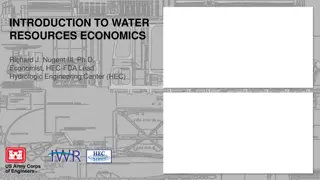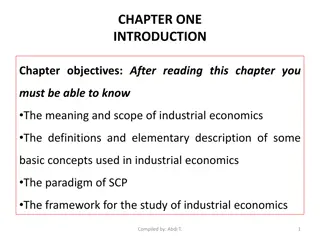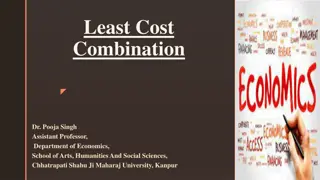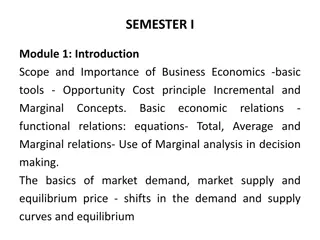
Macro Economic Aspects of India: NEP 1991 Policy Changes
Explore the macroeconomic aspects of India focusing on the New Economic Policy (NEP) of 1991. Learn about the rationale behind the policy changes, including fiscal crisis, balance of payments crisis, and inflationary pressure. Discover important policy changes in NEP 1991, such as macroeconomic stabilization and structural reforms in demand and supply management sectors.
Download Presentation

Please find below an Image/Link to download the presentation.
The content on the website is provided AS IS for your information and personal use only. It may not be sold, licensed, or shared on other websites without obtaining consent from the author. If you encounter any issues during the download, it is possible that the publisher has removed the file from their server.
You are allowed to download the files provided on this website for personal or commercial use, subject to the condition that they are used lawfully. All files are the property of their respective owners.
The content on the website is provided AS IS for your information and personal use only. It may not be sold, licensed, or shared on other websites without obtaining consent from the author.
E N D
Presentation Transcript
BUSINESS ECONOMICS - V ( Macro Economic Aspects of India ) T.Y.B.COM SEMESTER - V
MODULE - I MICRO ECONOMIC OVERVIEW OF INDIA
1. NEW ECONOMIC POLICY 1991
1.1 INTRODUCTION The year 1991 is one of the most significant one of the economic history of India.The economy underwent some major shifts in its policies and functioning.
Since 1991, when India adopted the Five Year Plan,the economy was functioning as a mixed economy with government controlling some of the most strategic industrial sectors. There were several controls of the government over the use of resources by the private sector. These were in the form of industrial licensing,import licensing and controls,foreign exchange regulations,public monopoly in sectors, MRTP Act, control over the banking sector and capital market.
1.2 THE RATIONALE Of NEW ECONOMIC POLICY (NEP) 1991
1. Fiscal Crisis 2. Balance of Payments Crisis 3. High Inflationary Pressure
1.3 IMPORTANT POLICY CHANGES IN NEP1991
A . MACROECONOMIC STABILIZATION ( DEMAND MANAGEMENT)
1. Control of Inflation 2. Fiscal Correction 3. Balance of Payments Adjustment
B . STRUCTURAL REFORMS ( SUPPLY SIDE MANAGEMENT)
1. Industrial Sector Reforms
(a)Abolition of Industrial Licensing (b) Permitted Foreign investment and Foreign technology
(c) Reduced the role of public sector (d) Removal of MRTP limit
2 . Public Sector Reforms and Disinvestment
3 . Trade and Capital Flows Reforms
(i) Liberalization of imports (ii) Reduction in tariff structure (iii) Promotion of exports
(iv) Change in exchange rate policy (v) Introduced current account convertibility (vi) Liberalized capital inflows
4. Financial Sector Reforms
(A ) Banking Sector Reforms
(i) Lowering of SLR (ii) Lowering of CRR (iii) Deregulation of Interest Rates
(iv) Introduction of Prudential Norms (v) Introduction of Capital Adequacy Norms (vi)Access to Capital Market
(vii) Entry of New Private Sector Banks (viii) Freedom of Operations (ix) Special Recovery Tribunals
(B ) Capital Market Reforms
(i) SEBI as Statutory Body (ii) Primary Market Reforms (iii) Online Trading and Dematerialised Trading (iv) Rolling Settlement
(v)Investment by FIIs (vi) Investor Protection (vii) Derivative trading
(viii) Establishment of NSE (ix) Setting up of National Securities Clearing Corporation (NSCC) (x) Strengthening the Government Securities Market
( C ) Insurance Sector Reforms
Reference - Books : Website :






















